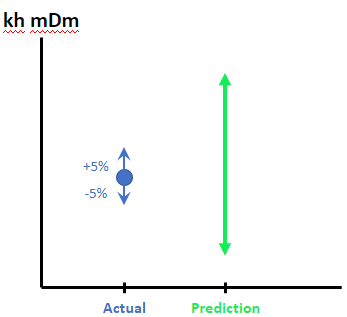Prediction of KHeff using artificial intelligence and Numerical Techniques.
Estimation of KH effectiveness prior to drilling is a challenging process due to great uncertainty in the parameters that control KH. Meanwhile, it is one of the most important measures that control production rate, and prior knowledge about the rate and total cumulative volumes is required to decide on the effectivity and profitability of a future well. KH effectiveness is directly connected to production rate, meaning that an inaccurate prediction in KH will lead to a corresponding overestimation or underestimation in rate and finally to wrong business decisions.
We performed research to forecast KHeff using machine learning (ML) algorithms, including multilinear perceptrons (MLP), random forest regression (RF), eXtreme Gradient Boost regression (XGBoost), and support vector regression (SVR). ML algorithms were trained based on 1500 samples from 115 wells. The following input parameters were identified as controlling parameters on the resulting PBU KH at different levels: Log KH, pressure, NTG, X and Y coordinates of the completion interval, expected date of the test, area (CDWG or Azeri), flank (north or south), porosity, water cut, and gas presence.


Based on the integration of the four ML models mentioned above, trained models were used in prediction. Iterative blind testing was performed on 115 wells in total.

A new metric to estimate the accuracy of the model is proposed by us, in which a prediction range is compared against actual PBU KH (plus/minus 5% range), and if the actual value is within the prediction range, it is accepted as a match (Fig 4). Applying this metric, ML showed 72% accuracy (83 matches out of 115 wells) with measured inputs (Fig 5). Moreover, we have accomplished this result with a 26% lower prediction range and 2880 times faster runtime than the analytical methods.


We have also created a dashboard in Jupyterlab for internal company usage, which makes our product user-friendly and easy to use.

